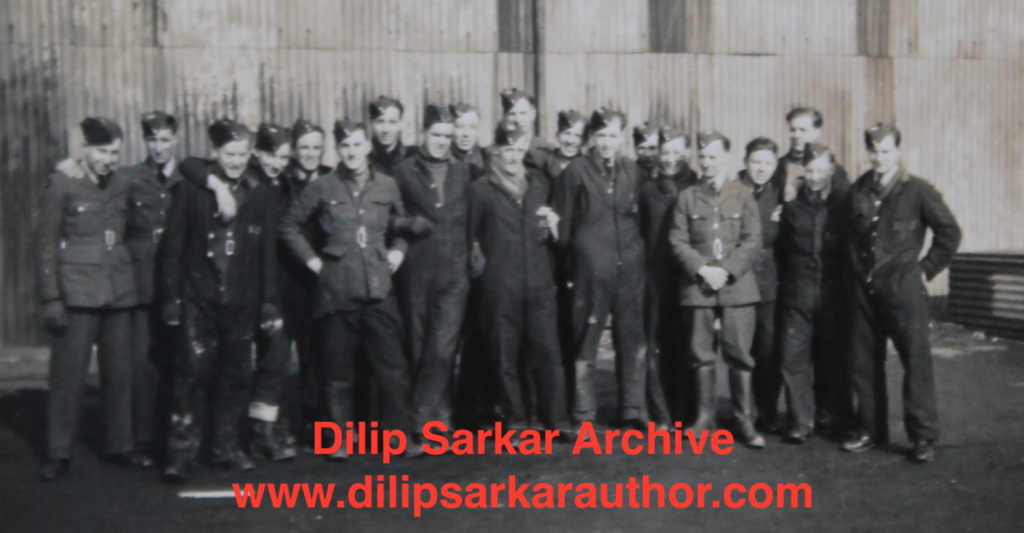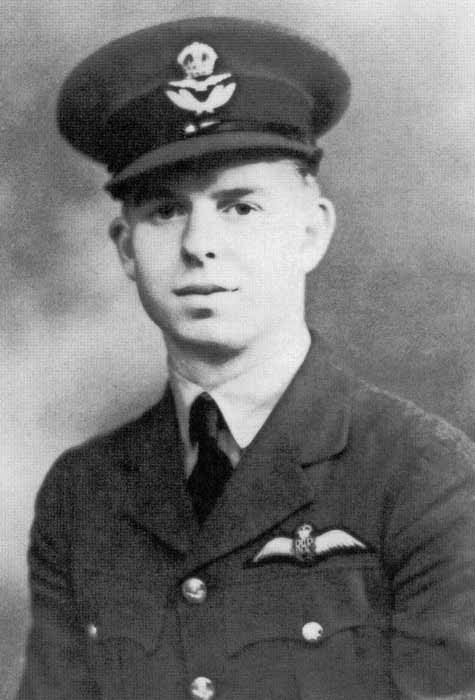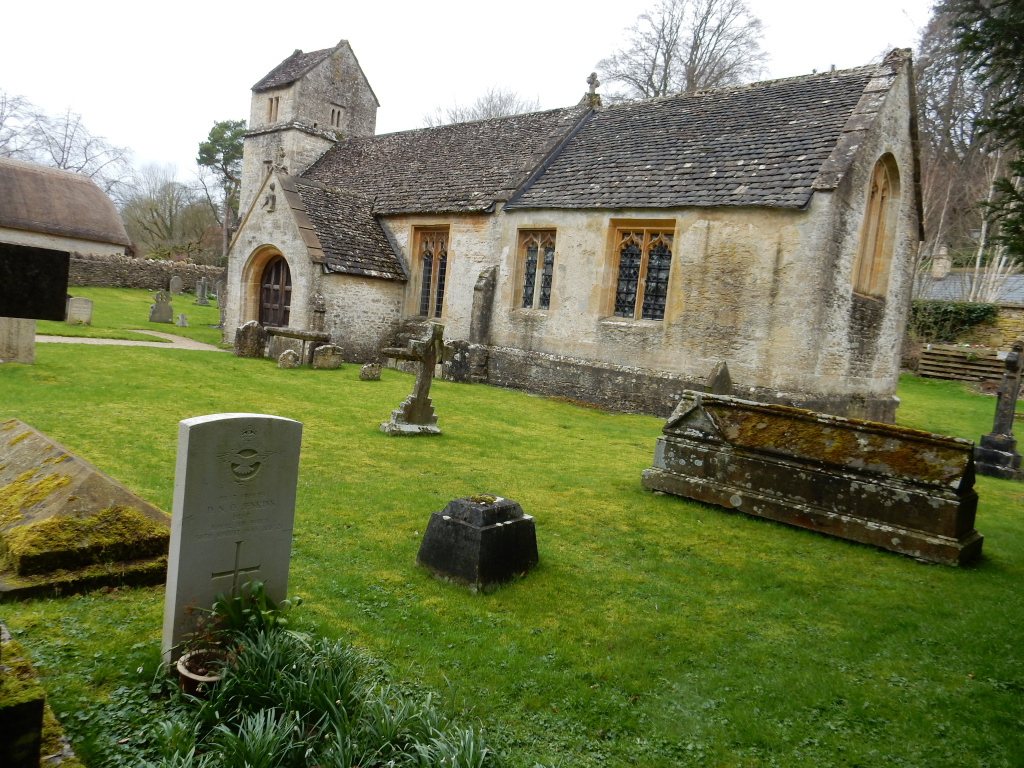
Sometimes, the most precious, unpublished material turns up unexpectedly – in this case from my old friend Lynn Reglar, and husband Stephen, from the album of Lynn’s late father, a Welshman, Frederick Powell, who joined the RAF in 1936 and in May 1940 was serving with 253 Squadron’s groundcrew…

On 30 October 1939, 253 Squadron was re-formed at Manston as a fighter squadron, operating Blenheims. Plans changed, however, and the following month 253 were re-equipped with Fairey Battle light-bombers. On 15 January 1940, news was received that the Squadron was to convert to Hawker Hurricane single-seater day-fighters. All pilots then spent time in a Hurricane cockpit, familiarising themselves with the controls and instruments, and rehearsed Fighter Command attacks with model aircraft. Lectures were given daily concerning ‘matters relating to Hurricane squadrons’.

On 14 February 1940, the Squadron moved from Manston to Northolt, and on 22, twelve pilots attended a course on Fighter Command Attacks and radio procedure at Uxbridge. By 24 February 1940, sixteen Hurricanes had been received, and intensive training flying began. On 27 April 1940, 253 Squadron was declared fully operational by day and night. At this time, 253 was the only complete operational fighter squadron at Northolt, and based in a large ‘C’ Type Hangar with full office facilities. AC1 Fred ‘Taff’ Powell was a member of the ground crew serving the aircraft of ‘B’ Flight, commanded by Flight Lieutenant Harry Anderson, and specifically Green Section, comprising Pilot Officers David Jenkins, Len Murch and Charles St David Jeffries.


On 10 May 1940, however, Hitler attacked the West, German forces achieving complete surprise, shocking Blitzkrieg tactics paralysing and confusing the Allied command. Four days later, On that day, 253 Squadron moved to Kenley. Three days later, Green Section’s Pilot Officer Jeffries, and two other pilots, were sent to France, there to reinforce 3 Squadron at Merville. Jeffries arrived the following day and was immediately in action, sharing in the destruction of an Me 110 before being shot down himself by an Me 109 and safely baling out over Annelles; he returned to 253 Squadron on 17 May.
On 16 May 1940, ‘B’ Flight, comprising five officers, thirty-nine airmen, ‘six aircraft and necessary equipment proceeded to France. The ground personnel were conveyed by air’. Based at Lille-Marcq, on 18 May, Pilot Officer Jenkins attacked a Do 17 but was hit by return fire and forced to crash-land at Amiens-Glissy; fortunately the pilot was unhurt. A particular friend of ‘Taff’ Powell’s was Sergeant-Pilot Gilbert ‘Mac’ McKenzie; by 19 May 1940, ‘B’ Flight had moved to Norrent-Fontes, and the Welshman inquired of the Scot how things were going? The 23-year-old fighter pilot replied ‘Not good at all’. Before mid-day, both ‘Mac’ and Flight Lieutenant Anderson were killed in action, shot down by Me 109s.


In 1946, a letter was received by the Air Ministry from a former soldier in the British Expeditionary Force, who had seen ‘Mac’ shot down, bale out – and machine-gunned by an Me 109 pilot whilst defenceless in his parachute. Sadly, this would not be the only such incident befalling members of 253 Squadron.

On 23 May 1940, Green Section’s Pilot Officer Murch was shot-up by Me 109s over Bethune, but managed to return home across the Channel to crash-land at Hawkinge; Murch was unhurt, but Pilot Officer Ford, who was flying with him and also shot down, was captured. On 24 May 1940, 253 Squadron was pulled out of France, returning to Kenley – having lost nine Hurricanes, with others damaged, four pilots killed and another captured in a battle already lost. On 28 May, 253 Squadron was sent north, to rest and re-fit at Kirton-in-Lindsey, near Hull in 12 Group.
At this point, ‘Taff’ Powell parted company with 253 Squadron, being posted to Dyce. Many years ago, he vividly described having seen a pack of Me 109s hack a Lysander down during the Fall of France, which, having lost his friend ‘Mac’, was clearly a traumatic experience.
At Kirton, the Squadron received and trained replacements pilots and re-built to strength. Squadron Leader Tom Gleave, later historian to the exulted Battle of Britain Fighter Association, took command and prepared to lead 253 Squadron back into the fray. By 3 June 1940, the British Expeditionary Force had been evacuated from the beaches of Dunkirk, and France would shortly surrender, joining the Netherlands, Belgium, Luxembourg, Denmark, Norway and Poland under Nazi occupation. The Fall of France – a great military power – was an utter catastrophe to the western democracies of a scale difficult to appreciate today. As the British Prime Minister, Winston Churchill, famously said, ‘What General Weygand called the Battle of France is over. The Battle of Britain is about to begin’.
Churchill was right. After a brief lull, the Battle of Britain began on 2 July 1940, with skirmishing over Channel convoys, although inexplicably 10 July 1940 would;d later be chosen as the official start-date. On 21 July, 253 was on the move, not back down South to 11 Group, but North to Turnhouse in 13 Group. On 10 August 1940, Squadron Leader Harold Starr took command, Squadron Leader Gleave becoming ‘vice’, and on 20 August the Squadron moved to Prestwick.
Early on the morning of 30 August 1940, Squadron Leader Starr led 253 Squadron to Kenley, there to relieve 615 Squadron. At Kenley the Hurricane pilots found a truly battered station, having been subjected to protracted heavy attacks whilst the enemy remained firmly focussed on denying Fighter Command’s use of its all-important 11 Group sector stations. Starr’s pilots would not wait long for the day’s first scramble.
By 1030 hrs that day, three formations of enemy aircraft were plotted over Calais, another of fifty plus orbiting Tramecourt. In response, two squadrons of Spitfires and four Hurricane units were scrambled. Then, fifty more bandits were plotted assembling over Cap Gris Nez. In anticipation of a raid on the airfields at Croydon or Kenley, between 1050-1055 hrs, 253 Squadron scrambled from Kenley to patrol Maidstone. Then, the Squadron was ordered to orbit Kenley – when three formations of bombers escorted by 30 Me 110 and 109 fighters were sighted over Redhill. The 253 Squadron Operations Record Book describes the action: –
‘”B” Flight at once attacked the bombers, which included He 111, Do 215 and possibly Ju 88s, but observed no results, with the exception of Pilot Officer Nowak (Green 3) who probably destroyed a Do 215. “A” Flight, who were behind and below, followed into the attack and Yellow 3 (PO Greenwood) fired all his ammunition into a He 111 which forced-landed, four of the crew seen climbing out. A series of individual fights took place, chiefly with Me 110s and Me 109s which had come to the rescue of the bombers.
‘Blue 1 (Flt Lt Cambridge) delivered a beam attack which developed into a quarter attack, finally when the Me 110 was in a gentle dive with port wing streaming smoke, he gave it a long burst from astern, causing the starboard engine to pour out black smoke and driving the enemy aircraft into a steep dive. When Flt Lt Cambridge pulled out of his dive at 2,000 feet, the E/A was going straight down.
‘Blue 2 (PO Samolinski) attacked an Me 110 from above and astern, silenced the rear gunner and saw his bullets entering wings and fuselage, sending it down in a spiral dive. He made a similar attack on a second Me 110, silencing the rear gunner.
‘Blue 3 (Sgt Innes) made a head-on attack from 800 – 75 yards. As he broke away he saw parts breaking off the machine which then rolled over and dived towards the ground.
‘Squadron Leader Gleave, leading the ‘Emergency Section’, attacked the Me 109s which were trying to get on the tails of our fighters. He saw one dive away with smoke pouring from his port wing and a second one turned on its side with the nose up and slid away out of sight, giving him the impression that the pilot had been knocked out. None of the other pilots observed any material results from their fire, though several saw their bullets going into enemy aircraft’.
It was a violent return to the combat zone and a complete contrast to the comparative peace and tranquility of Scotland. In this classic Battle of Britain interception, 253 Squadron claimed the destruction of three Me 110s destroyed and three Me 109s, two 109s and a Do 215 probably destroyed, and a 110 damaged.
But… Flight Lieutenant George Brown was shot-up and wounded, forced-landing near Maidstone, and the Hurricanes of both Squadron Leader Starr and Pilot Officer Samolinski were also shot-up. Worse, two pilots were missing…
Pilot Officer Colin Dunstone Francis, a replacement pilot having joined 253 Squadron on 17 June 1940, failed to return that day and remained missing until 1981 – when his Hurricane’s crash site was discovered near Wrotham in Kent, and his remains recovered. The 19-year-old was given a full military funeral at Brookwood.

At 1120 hrs that fateful day, Pilot Officer David Nicholas Owen Jenkins was shot down over Redhill, his Hurricane crashing at high speed and from great height near Caterham. Certain published accounts have claimed that ‘Jenks’ was also shot whilst defending by parachute, but his Casualty File, preserved at The National Archive, disproves this. David was the son of the Rev Canon William Owen Jenkins and Horatia Mary Jenkins, of St Andrew’s, Fife, Scotland. Between 1917 and 1919, however, David’s father had been Rector at St Margaret’s, in the beautiful, quiet, village of Bagenden, Glouctershire, but died and was buried there whilst his son was just a boy. On 3 September 1940, the current Rector, the Rev Thomas Chadwick, presided over the 21-year-old pilot’s funeral – and buried him next to his father.


During the evening of 30 August 1940, 253 Squadron were in action again, losing another pilot killed, another Hurricane shot down with the pilot safe, and a third shot-up. The dead pilot was Sergeant John Holt Dickinson, who was machine-gunned whilst defending by parachute, his body found ‘riddled with bullets’. The day had seen the heaviest fighting to date, with massive raids incoming, in response to which Fighter Command flew 1,054 sorties. Twenty-two squadrons had been engaged, some four times, and all of them at least twice. Eight RAF fighter pilots had been killed, whilst another later died of wounds suffered this dreadful day.

The following day, Squadron Leader Starr was shot down and killed on the dawn patrol – his Casualty File and eye-witness evidence confirming that he too had been machine-gunned by an Me 109 pilot whilst coming down by parachute near Eastry in Kent. Squadron Leader Tom Gleave then resumed command but later that day became a ‘flamer’, suffering horrendous burns requiring the attention of that incredible, pioneering, surgeon Sir Archibald McIndoe at the Royal Victoria Hospital’s Burns Unit in East Grinstead. Tom survived and went on to become a founder member of the Guinea Pig Club, the members of which were badly burned aircrew treated by McIndoe. Having lost two Commanding Officers in just a few hours, Flight Lieutenant Bill Cambridge became acting CO – but he too was killed in action, on 6 September 1940. Gerry Edge, an experienced flight commander on 605 Squadron, was then promoted to command the battered 253 Squadron – until he too was shot down and wounded on 26 September 1940. During the Battle of Britain, therefore, 253 Squadron had a tough time, losing a total of eleven pilots killed or missing in action.
Returning to the late ‘Taff’ Powell’s wonderful, unique, snapshot of Green Section at Northolt in May 1940, just before the real fighting erupted, the other two pilots pictured, Pilot Officers Jeffries and Murch both survived the Battle of Britain. Sadly, Murch died of polio in Benghazi in 1943, whereas Jeffries became a successful fighter pilot, fighting in Malta, ending the war a wing commander decorated with the DFC; having retired from the service in 1967, he died in 1985.
Who decided who lived or died? As Wing Commander Bernard ‘Jimmy’ Jennings AFC DFM said, ‘It was just luck. If your number was up and your name on it, that was it. We didn’t think too deeply about it and regarding casualties it was just a case of “So and so’s bought it”, and that was that’.
That’s just the way it was – and had to be.